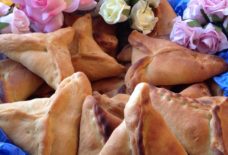Mariam Al Astrulabi: Influential Arab-Female Astronomer!
By Ruqyah Sweidan, Arab America Contributing Writer
Known as the Golden Age of Islam, the period between the eighth and fifteenth centuries was marked with priceless contributions of Muslim scholars still in use today. Science, mathematics, medicine, astronomy, physics and chemistry are some of the fields that were forever changed by Muslims. Their work continued to inspire the great thinkers of the Renaissance and Enlightenment as well as those of today. This article will recount the achievement of Mariam Al Astrulabi, a Muslim, female astronomer who changed the field with her improvements of the astrolabe device.
Generally, Muslim astronomers expanded upon the work of those who came before them, such as the Ancient Greeks and Persians. They then took elevated the science by inventing new tools to measure and calculate the movement of stars and planets. Of course, Muslims pray five times a day. Thus, the positions of the sun and Mecca were essential for them to determine. Hence, they quickly became masters of direction and perception.
Who Was Mariam Al Astrulabi?
By the tenth century, Mariam Al Astrulabi took the craft of building astrolabes to the next level. An astrolabe is an ancient device used to measure time as well as indicate latitude. It can also be used to measure events like a wobble in the Earth’s axis. It consists of a disk of metal or wood with the circumference marked off within degrees. There is also a movable pointer pivoted at the center of the disk called alidade. With an astrolabe, astronomers could calculate the position of celestial objects, the time of day (or night), the time of year, the altitude of any object, the latitude and much more. The tool was also used in astrology and horoscopes. Muslims would specifically use it to find the Qibla, determine prayer times and the initial days of Ramadan and Eid.
Mariam was a brilliant and focused scholar of astronomy who tirelessly worked out the mathematical calculations and precisions. She was dedicated to perfecting transportation and communication using astrolabes. Born in Syria, her interest in astronomy came from her father, Al- Ijliyy al-Asturlabi. He had apprenticed for an astrolabe maker in Baghdad. The father had no reservations about sharing his work with and mentoring his daughter. Mariam’s innovative design of the astrolabe impressed Sayf Al Dawla, the ruler of Aleppo from 944 to 967 AD. Al Dawla realized the innovation and intricacy of Mariam’s work and employed her in the court in Aleppo. She was also involved in improving the navigation and timekeeping techniques of local merchants and naval officer.
Mariam Al Astrulabi’s Legacy
Mariam’s contribution in astronomy was officially recognized when the main-belt asteroid, 7060 Al-Ijliyye, was named after her following the discovery of Henry E. Holt at the Palomar Observatory in 1990. Also inspired by Mariam’s strides was Nigerian American author Nnedi Okorafor. In 2016, Okorafor wrote a novel ‘Binti’ and based the central character of the story around Mariam. Her novel received the Nebula Award. It is great to know a Muslim, Syrian woman from the past who was passionate about astronomy. She is a role-model for millions of girls across the world who want to make a mark through research and invention.



